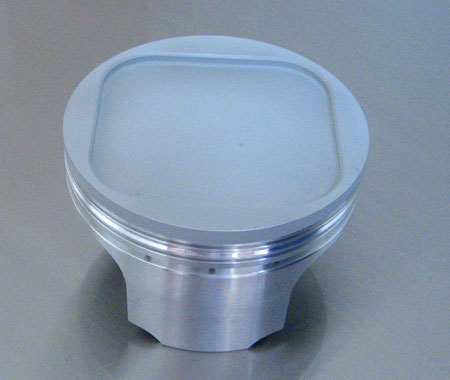Thermal barrier coatings
 There are a number of coating companies offering thermal barrier coatings, and some claim that internal combustion engine valves are an ideal candidate for these types of coatings. There are many whose advertisements target the racing community in particular.
There are a number of coating companies offering thermal barrier coatings, and some claim that internal combustion engine valves are an ideal candidate for these types of coatings. There are many whose advertisements target the racing community in particular.
The coatings that these companies offer are generally quite thin ceramic coatings which offer very low thermal conductivity compared to the valve material. We should at this point note that a titanium valve has very much lower thermal conductivity than a steel valve.
So, what are the claimed advantages for these coatings? The most commonly quoted is that there will be less heat lost from the combustion chamber as a result of combustion through the face of the valve. The vast majority of any heat flow through the valve goes into the cylinder head via the valve’s contact with the valve seat, with some also being conducted into the cylinder head via the valve guide. Naturally the valve also becomes heated to a certain extent, and the claim is that this loss of heat from the combustion chamber is reduced, thus increasing the amount of work which can be extracted from the fuel. We are often told, not only by the authors of text-books but by politicians of all persuasions, how much energy is wasted from an engine in the form of heat, and the heat lost to coolant (be it air, oil, or water) is an extremely significant part of this lost energy. Lower heat rejection from the combustion chamber should mitigate this loss of energy, providing that we make some use of this hotter gas and don’t simply let it out of the exhaust port. In terms of a racing car, an engine with lower heat rejection to the water circuit in theory means the ability to run less cooling air flow and therefore smaller radiators.

The thermal barrier coating itself becomes very hot as it cannot conduct heat away to the seat very efficiently, but owing to its low mass, it doesn’t impart much heat to the incoming charge, which quickly cools the coating. Another positive side-effect of the lower level of conduction through the valve seat is that the valve and the valve seat should be cooler. Heat transfer to the incoming charge from hot valves and valve seats has been shown to be significant and to have a measurable and detrimental effect on engine performance, and so any detrimental heating of the incoming charge will be reduced. This benefit is seldom stated by those advertising such coatings. If more heat is transferred to the incoming charge, the pressure of the charge in the cylinder is raised, thus causing the pressure differential between the inlet and cylinder sides of the chamber entry to be less favourable to further air flow into the cylinder. We can see, therefore, that lower heat transfer to the incoming charge should result in greater volumetric efficiency.
I don’t know of any ‘serious’ application of this coating in bespoke racing engines, and enquired further with someone who has wide-ranging experience. ‘Valve Expert’ has excellent knowledge of valve applications across the whole range of racing formulae, and knows of nobody using these types of coatings on bespoke racing valves. His opinion was that the lack of ductility would affect the reliability of the coatings, and that reduced fatigue strength was also a concern.
Written by Wayne Ward.